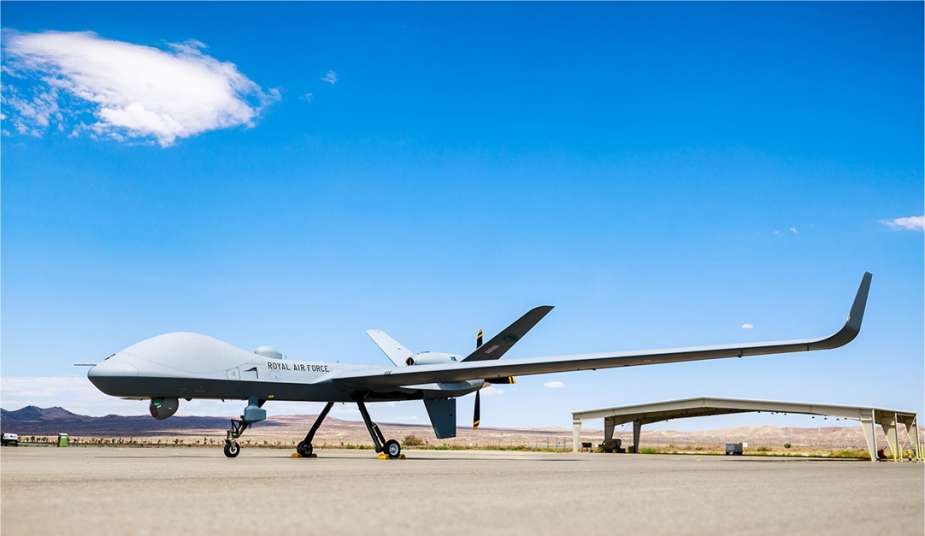Breaking news
Royal Air Force 54 Squadron undergoes specialized training on Protector RG Mk 1 UAV.
On August 28, 2023, the Royal Air Force (RAF) revealed that instructors from its 54 Squadron have commenced the inaugural Instructor Operating Course (IOC) for the Protector RG Mk 1 drone. This specialized training is being conducted at General Atomics - Aeronautical Systems Inc's (GA-ASI) Flight Test & Training Center in Grand Forks, North Dakota.
Follow Air Recognition on Google News at this link
 Protector is designed to carry next-generation, low-collateral, precision strike weapons. (Picture source: General Atomics )
Protector is designed to carry next-generation, low-collateral, precision strike weapons. (Picture source: General Atomics )
Initiated on May 1, 2023, the IOC involves crews made up of pilots, sensor operators (SOs), and mission intelligence controllers (MICs). These crews are undergoing various simulated scenarios under the supervision of GA-ASI instructors. The simulations primarily focus on Intelligence, Surveillance, and Reconnaissance (ISR) tasks, including the identification and tracking of designated ground targets.
The IOC aims to develop RAF-specific training materials and operational scenarios for future Protector crews. The training is designed to assess the skills required to operate the Protector and its associated systems, such as its multi-spectral targeting system and synthetic aperture radar. According to GA-ASI, pilot and SO training is expected to last 12 weeks, while MIC training is set for a duration of six weeks.
The Protector RG Mk 1, often referred to as the MQ-9B, is a remotely piloted medium-altitude, long-endurance (MALE) aircraft that is slated to succeed the Reaper MQ-9A in the Royal Air Force's (RAF) inventory. One of its key features is its extended endurance, capable of sustained flight for up to 40 hours. This significantly enhances the RAF's operational capabilities, particularly in the realm of armed Intelligence, Surveillance, Targeting, and Reconnaissance (ISTAR).
Operational control of the Protector can be executed remotely from RAF Waddington, allowing for global deployment while centralizing command and control. This centralization is made possible by advanced communication links and data-sharing capabilities. The aircraft is also equipped with innovative 'detect and avoid' technology, enabling it to safely operate in busy, unsegregated airspace, a feature that sets it apart from other remotely piloted platforms like the Reaper.
In terms of automation, the Protector has the ability to take off and land on its own, which not only adds to its operational flexibility but also minimizes its deployed footprint. This is particularly useful in theaters where rapid deployment and redeployment are required.
The aircraft's payload is another area where it stands out. It comes equipped with a complex suite of high-definition sensors, including an Electro-Optical and Infra-Red (IR) camera. These sensors, combined with its long endurance, offer persistent reconnaissance capabilities across the electro-magnetic spectrum. This makes the Protector highly versatile, capable of performing a wide range of strategic tasks from close air support to disaster relief, depending on mission requirements.
For armament, the Protector is designed to carry next-generation, low-collateral, precision-strike weapons. Specifically, it will be equipped with the UK-manufactured Brimstone missile from MBDA and the Paveway IV Laser Guided Bomb from Raytheon UK. The involvement of these companies, along with 12 other UK firms, highlights the collaborative nature of the MQ-9B program and its importance to the UK's defense infrastructure.
The RAF has ordered a total of 16 Protector UAVs. The first unit completed its maiden flight in September 2020 and the fleet is expected to enter service in 2024. The first eight units are slated to achieve initial operating capability by the end of 2024.






















